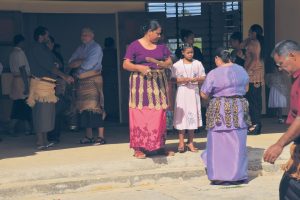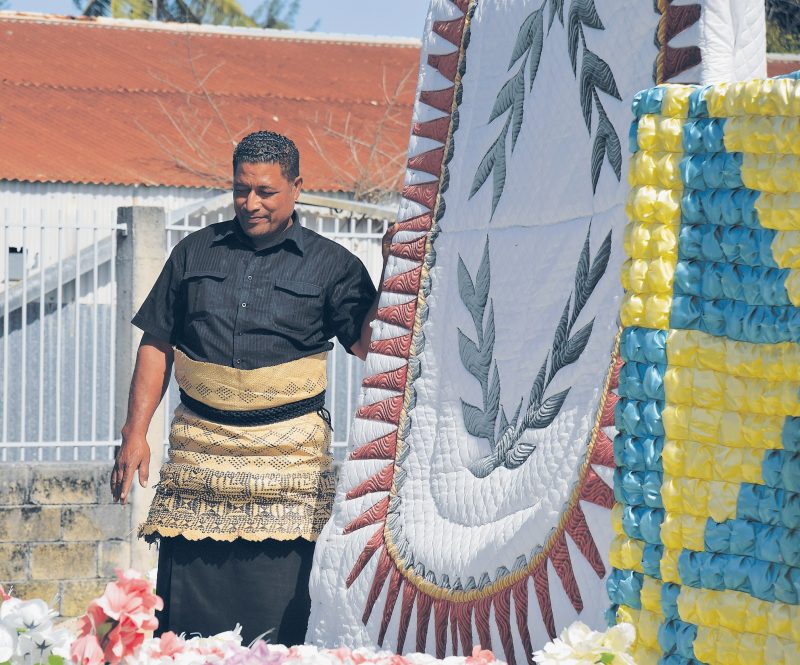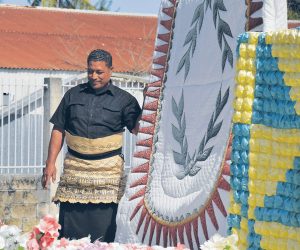by JUDITH DOYLE
Going to church in Tonga is reverential, sociable, colourful and, musically, a delight. With my son and two grandchildren, I attended St Theresa’s Catholic Church in Pangai during our 10 days in sleepy Ha’apai — a group of islands sprinkled across the central waters of Tonga.

Pangai is the administrative capital of Ha’apai.
It lies on Lifuka Island and its centre is the Catholic church (Siasi Katolika) — an impressive building for
a small village of only 2000 people.
Ha’apai was the first island group in Tonga to be converted to Christianity when missionaries, in 1831, baptised the ruling Tu’i Tonga, who became King George Tupou I. The animist beliefs that Tongans held previously — that natural phenomena such as trees, mountains, sky had souls — occasionally survive in burial traditions and health.
From our small resort on Foa Island we cross a causeway to Lifuka Island. We see hardly any people en route — it is enshrined in Tongan law that it is illegal to work on Sunday. So no shops are open, streets are empty and no sport is being played.
The main road to Pangai actually crosses the runway of Ha’apai’s only airport! No worries; planes don’t fly on Sunday either.
Pangai itself is scruffy and a bit bleak, partly due to the category 5 cyclone, with winds of 200km/h, that hit in 2014. Most buildings were flattened or seriously damaged and are only gradually being repaired or replaced. Also Ha’apai has no natural fresh water — rainwater has to supply all needs. So beautifying an area, with flowering plants and shrubs that need watering, is not a priority.
Around St Theresa’s Catholic Church though things are buzzing. Church is certainly where the locals are on Sunday. Clusters of people are chatting outdoors near the statue of St Theresa of Avila. I pause here too before entering the church, intrigued by the variety of Sunday Best outfits on display.
Sele our driver and many of the men are wearing straw-coloured pandanus mats, called ta’ovala, on top of their longer wraparound skirts. Some women are also wearing pandanus mats, like the men, over dresses, which are often ankle length. A few women are in totally white dresses. But it was the kiekie, mostly on younger women, that fascinate me. Kiekie is a decorative waistband of woven strips of pandanus from which hang many different styles of fringes and strips.
While the church fills with people, I note the unusual angled wooden ceiling and the abstract design of the little triangular stained-glass window above the altar. Other windows are plain glass, so the church is flooded with light, despite the dark wood ceiling.
Soon the singing rings out. A conductor keeps the beat at the front, and as usual in Tongan churches the singing is joyful, uninhibited and enthusiastic. Truly an atmosphere of thanksgiving.
The short sermon is in Tongan and English.
Nearly all Tongans identify as Christian, with most belonging to the Wesleyan (including the Royal Family) and Methodist churches.
About 16 per cent of the population are Catholic — the last of the Tu’i Tonga line of Tongan kings was Catholic.
In 1842 Tonga was included in a Catholic diocese that covered central Oceania, an immense area.
There were susbsequent name and area adjustments through the years until 1966 when the diocese of Tonga came into being.
Early this year Pope Francis announced that he would make Tonga’s bishop, Soane Patita Paini Mafi, a cardinal.
After the service our driver, Sele, takes us to the nearby cemetery and shows us the grave and monument of Methodist missionary Shirley Baker, who died in 1903. He was Tonga’s first prime minister and adviser to King George Tupou I. We also visit a typical Tongan cemetery with its decorated sand and coral mounts.
Sele explained how families like to beautify their family graves with hand-sewn quilts as well as flowers and tributes. Their cemeteries, like their churchgoing, are certainly colourful.


Reader Interactions